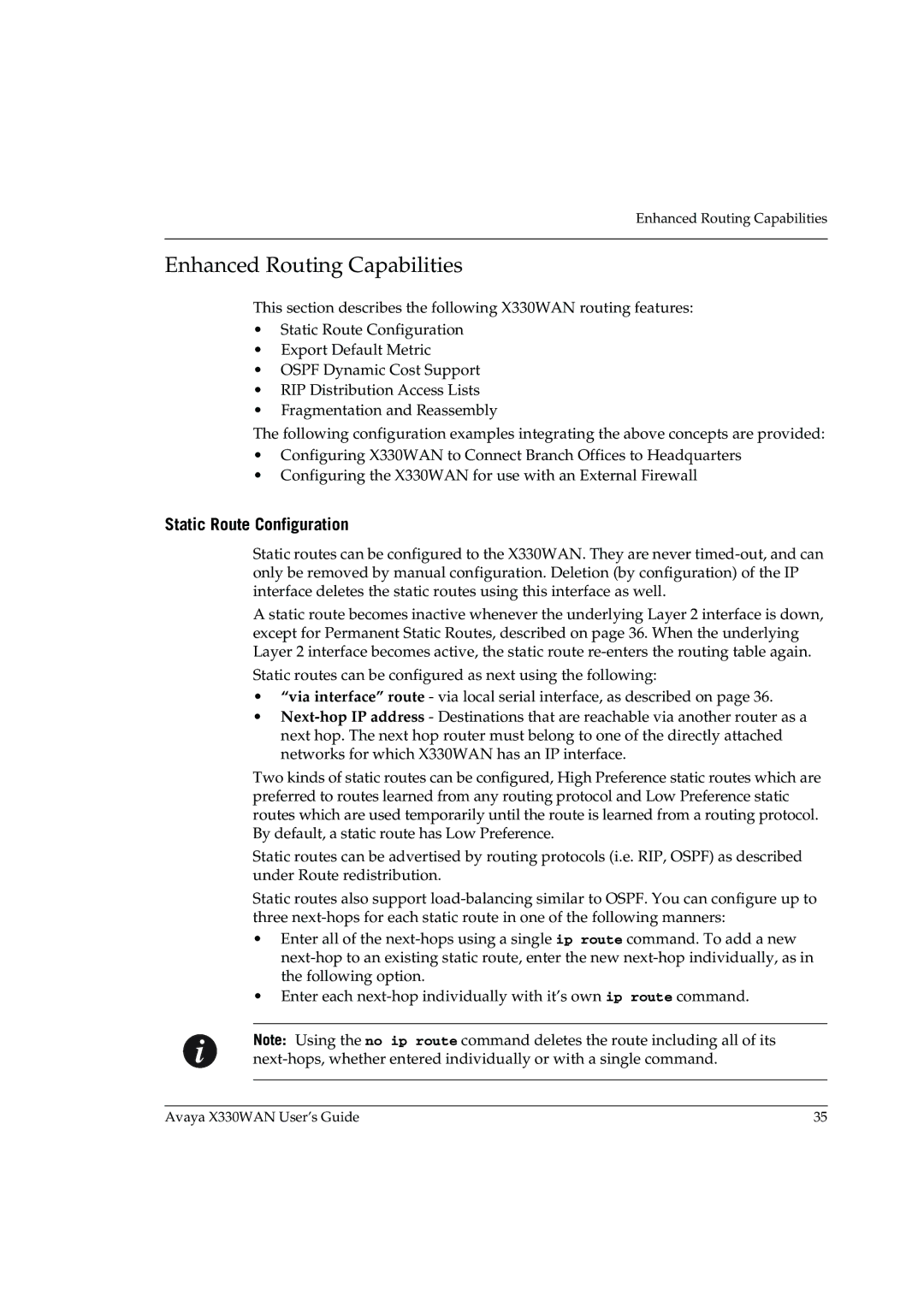
Enhanced Routing Capabilities
Enhanced Routing Capabilities
This section describes the following X330WAN routing features:
•Static Route Configuration
•Export Default Metric
•OSPF Dynamic Cost Support
•RIP Distribution Access Lists
•Fragmentation and Reassembly
The following configuration examples integrating the above concepts are provided:
•Configuring X330WAN to Connect Branch Offices to Headquarters
•Configuring the X330WAN for use with an External Firewall
Static Route Configuration
Static routes can be configured to the X330WAN. They are never
A static route becomes inactive whenever the underlying Layer 2 interface is down, except for Permanent Static Routes, described on page 36. When the underlying Layer 2 interface becomes active, the static route
Static routes can be configured as next using the following:
•“via interface” route - via local serial interface, as described on page 36.
•
Two kinds of static routes can be configured, High Preference static routes which are preferred to routes learned from any routing protocol and Low Preference static routes which are used temporarily until the route is learned from a routing protocol. By default, a static route has Low Preference.
Static routes can be advertised by routing protocols (i.e. RIP, OSPF) as described under Route redistribution.
Static routes also support
•Enter all of the
•Enter each
Note: Using the no ip route command deletes the route including all of its
Avaya X330WAN User’s Guide | 35 |
